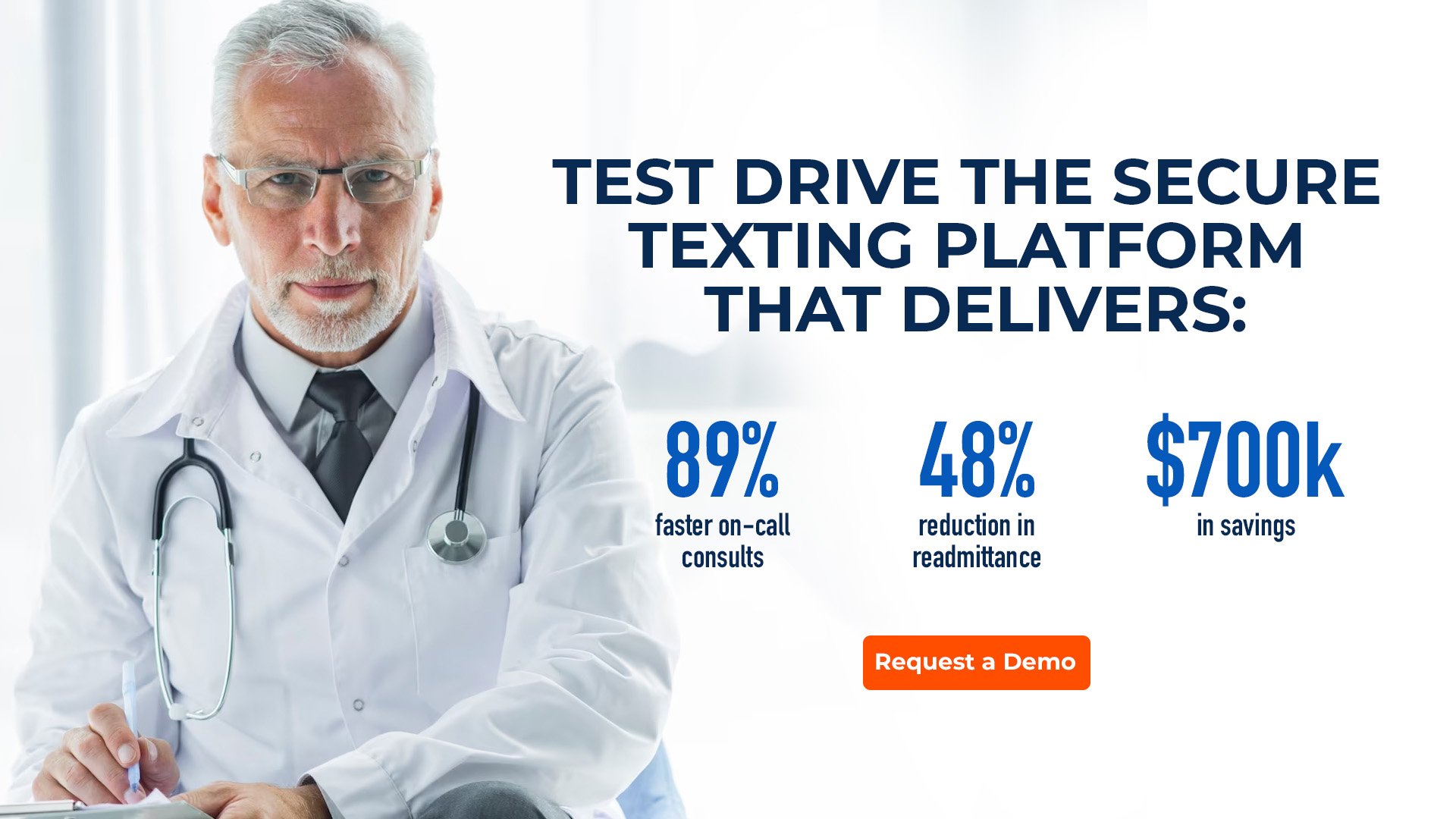Winning Clinician Buy-In: 5 Strategies for Successful Healthcare Technology Adoption

The adoption of innovative healthcare technologies is no longer a luxury but a necessity for healthcare organizations.
At a MedCity conference, CommonSpirit Health CIO Daniel Barchi shared two critical actions that hospitals and healthcare organizations can take to help ensure their new technology investments will be worth their time and money.
Barchi says the first step is to prioritize scalability, and the second step is to involve frontline clinical staff early in the process. Yet, many organizations neglect this step, and clinicians end up rejecting the tool because it doesn’t intuitively fit into their daily routines.
To ensure new technologies will have a positive impact, CIOs, CMOs, CMIOs, and CNOs should involve their frontline clinicians in the assessment, selection, and implementation steps. By working together to migrate to a single Healthcare Communications Ecosystem platform, organizations can improve buy-in of the new technology for greater adoption, project success and outcomes.
The Most Common Clinician Concerns
When bringing new healthcare technology into an organization, clinicians often have various concerns and considerations to ensure the safe and effective implementation of the technology. Some of the most common clinician concerns we hear include:
- Patient Safety: Clinicians are primarily concerned with patient safety. They want to ensure that the new technology does not pose any risks to patients, such as incorrect diagnoses, medication errors, or compromised patient data security.
- Ease of Use: Clinicians need technology that is easy to use and integrates into their workflows and communications. If the technology is not user-friendly, it can lead to frustration, errors, admission delays, and resistance to adoption.
- Training and Education: Clinicians deserve effective and tailored training to seamlessly embed new technology into their workflows. Concerns often revolve around the availability and quality of training programs, as well as the time required for training.
- Workflow Integration: Disruption of established workflows is a major concern. Clinicians want assurance that the new technology will enhance, rather than hinder, their ability to provide care efficiently.
- Interoperability: Clinicians often work with various systems and devices. They are concerned about the compatibility of the new technology with existing systems to ensure seamless data sharing and communication.
- Reliability and Technical Support: Reliability of the technology and the availability of responsive technical support in case of issues are significant concerns for clinicians. Downtime can impact patient care.
- Cost: Budget constraints often lead to concerns about the cost of implementing and maintaining the technology. Clinicians want to ensure that the investment is justified by improved patient care or efficiency gains.
- Regulatory Compliance: Compliance with healthcare regulations is essential. Clinicians are concerned about whether the new technology meets these requirements or might put them at risk for non-compliance.
- Change Management: Resistance to change among staff can be a barrier to successful adoption. Partial adoption of new technology can impede clinical care.
- Clinical Impact: Clinicians want assurance that the technology will have a positive impact on patient outcomes and clinical decision-making rather than simply introducing complexity.
- Scalability and Future-Proofing: As healthcare organizations grow, clinicians are often concerned about whether the technology can scale and remain relevant as their needs evolve.
Clinician buy-in is critical to the successful implementation of any healthcare technology. Addressing these concerns through planning, clear communication, collaboration, and ongoing assessment of the technology's performance is crucial for successful adoption.
Strategies for Clinician Engagement
To help you navigate this critical aspect of adoption, here are five key strategies and the steps to follow to involve clinicians early in the process:
- Establish Clear Communication Channels:
- Step 1: Identify key stakeholders among your clinicians, including physicians, nurses, and other relevant staff members.
- Step 2: Create a dedicated communication plan that outlines how and when information will be shared with clinicians. This could include regular meetings, newsletters, or online forums.
- Step 3: Foster an environment of open communication, encouraging clinicians to express their opinions, concerns, and suggestions.
- Collaborate from Day One:
- Step 1: Form a team that includes clinicians, IT experts, and project managers.
- Step 2: Engage clinicians in the technology selection process. Invite them to participate in product evaluations, demonstrations, and meetings.
- Step 3: Encourage clinicians to contribute their expertise to define the technology's requirements, ensuring it aligns with their daily workflows.
- Address Concerns and Provide Training:
- Step 1: Actively listen to clinicians' concerns and objections regarding the new technology.
- Step 2: Develop tailored training programs to ensure clinicians are confident and proficient in using the technology.
- Step 3: Offer ongoing support and resources to address any issues that arise during implementation.
- Highlight Patient-Centric Benefits:
- Step 1: Emphasize how the new technology will improve patient care and outcomes. Use real examples and case studies to illustrate its benefits.
- Step 2: Encourage clinicians to share success stories and patient testimonials to inspire their peers.
- Step 3: Promote technology as a tool that enhances, rather than replaces, the human touch in healthcare.
- Measure and Showcase Results:
- Step 1: Implement key performance indicators (KPIs) to track the impact of the technology on clinical outcomes, efficiency, and cost-effectiveness.
- Step 2: Regularly review and share the results with clinicians, highlighting how their involvement contributed to positive outcomes.
- Step 3: Recognize and celebrate the achievements of clinicians who have effectively embraced technology.
By following these steps, you can create a collaborative and supportive environment where clinicians not only accept but actively champion the adoption of new healthcare technology. Remember that clinician buy-in is an ongoing process, and their input and engagement should be valued at every stage of implementation.
Healthcare Technology Adoption
To sum it up, achieving the seamless integration of healthcare technology adoption is intricately tied to garnering the support of clinicians. CIOs, CMOs, CMIOs, and CNOs assume pivotal roles in nurturing this support through actions such as facilitating transparent communication, initiating collaboration from the project's inception, attending to concerns, underscoring patient-centric advantages, and highlighting measurable achievements. By adhering to these principles and taking these actions, healthcare organizations can pave the way for a more streamlined of connecting healthcare…at last.





